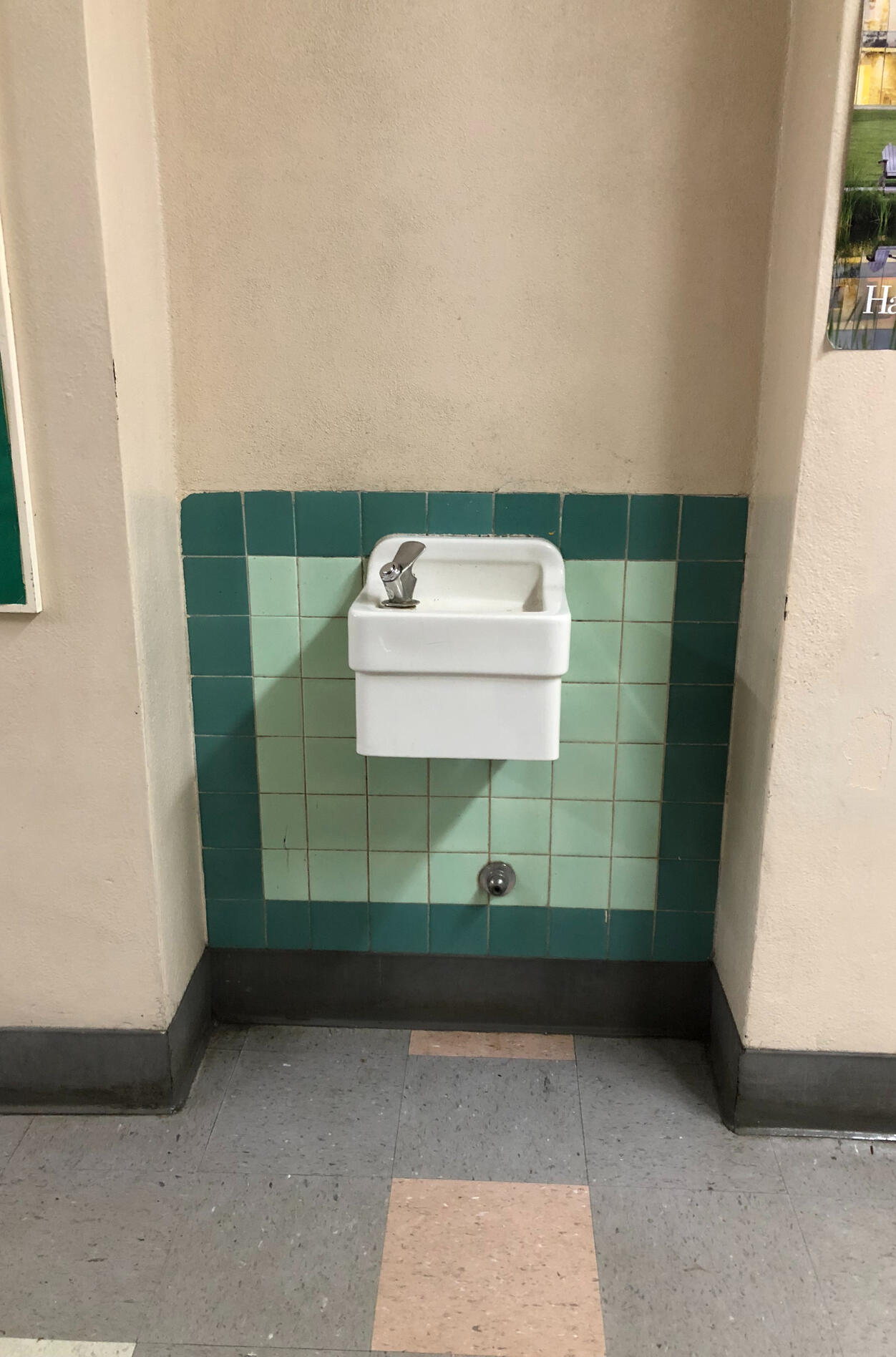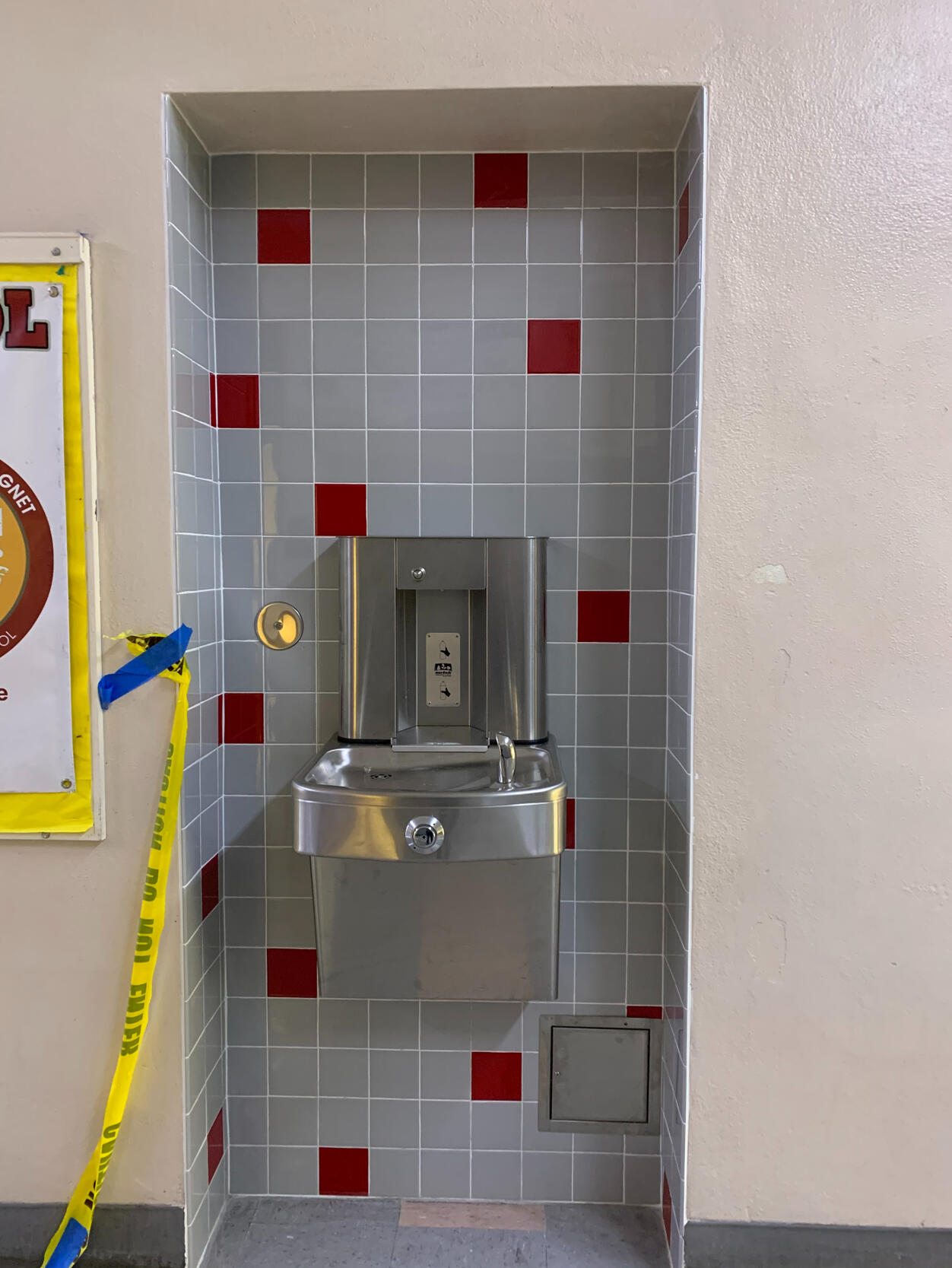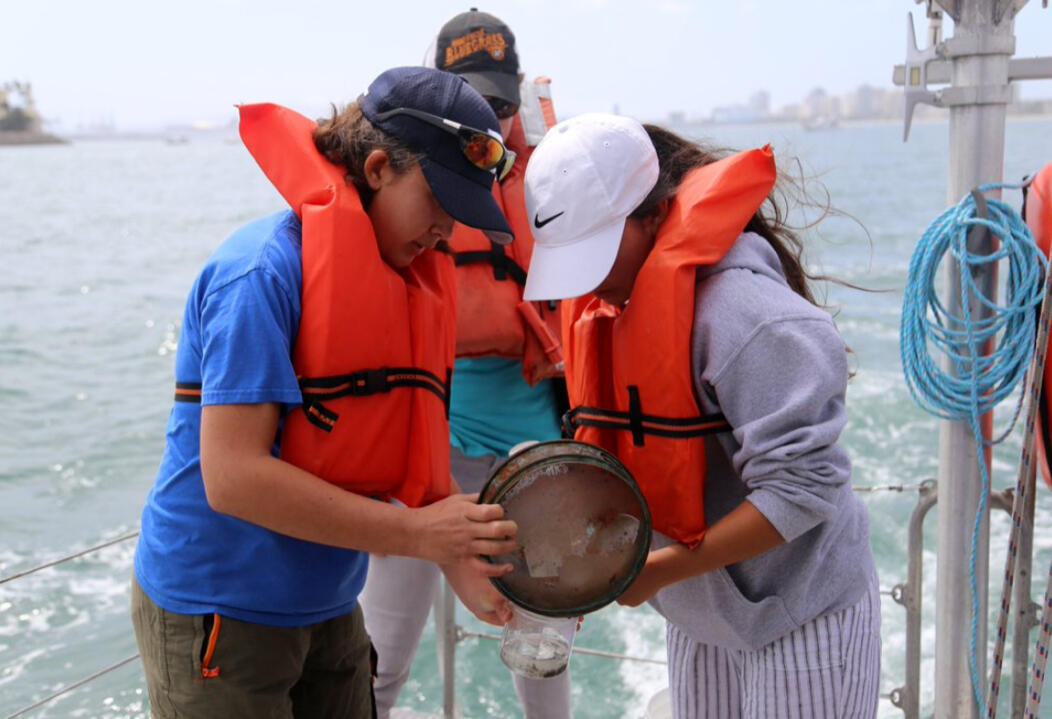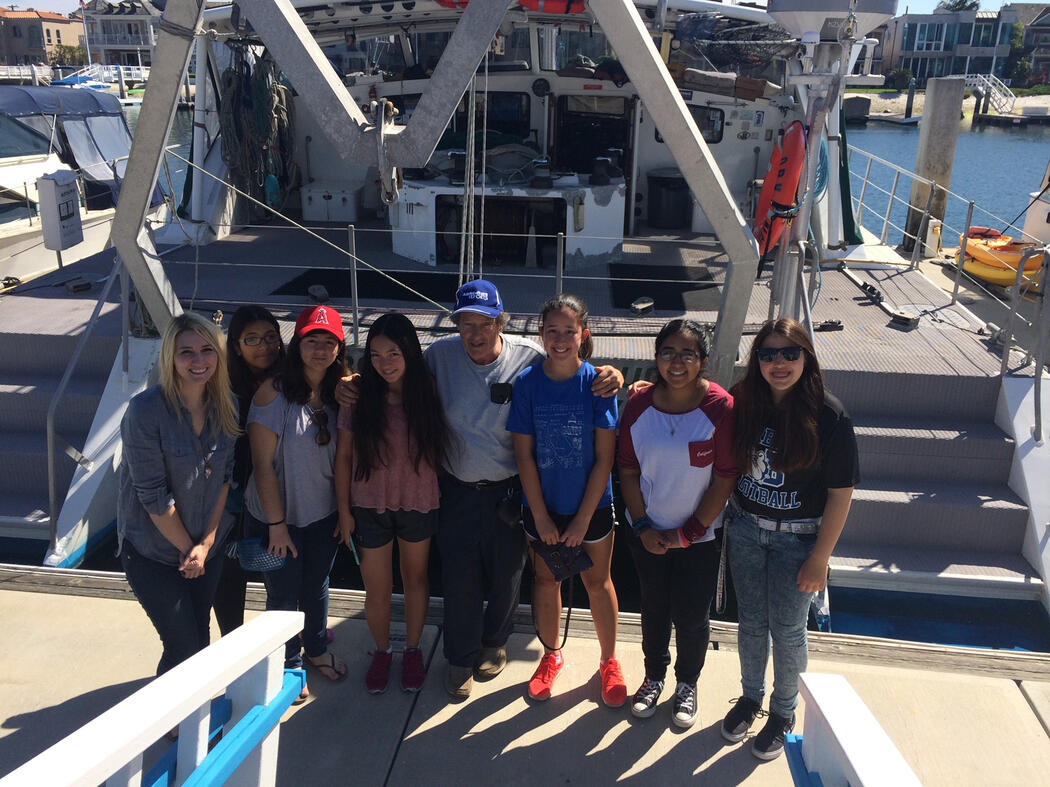The Enviro student
Hello! Welcome to the enviro student website. Here you can learn about the important environmental problem of plastic pollution and use this information to educate and empower other students to take action to reduce their plastic waste. Together, we can protect the environment by being mindful of our plastic usage and focusing on sustainability in each aspect of our lives. If you start now while you are young, you will make a huge positive impact over your lifetime!
Created by Kristen Vitolo
GSGLA Troop 2406 Gold Award Girl Scout
13 Years in Girl Scouting & Lifetime Member
Plastic Pollution: Fast Facts
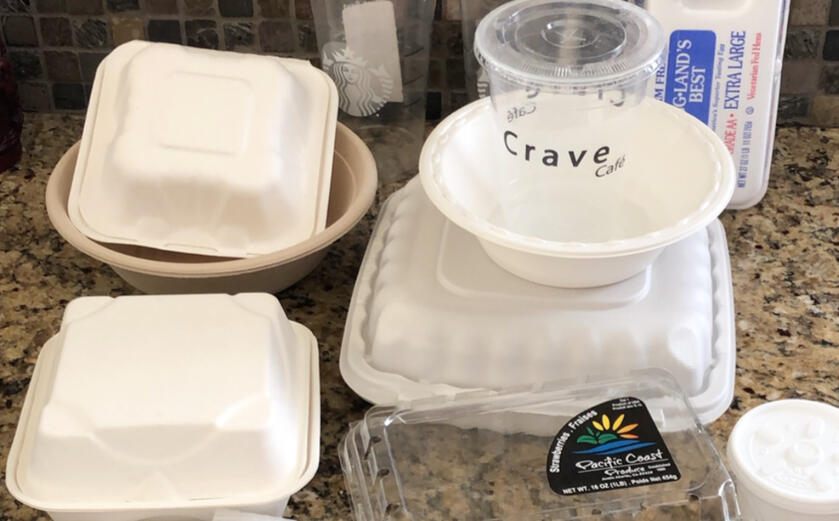
What Plastics are Banned & What Should be Banned
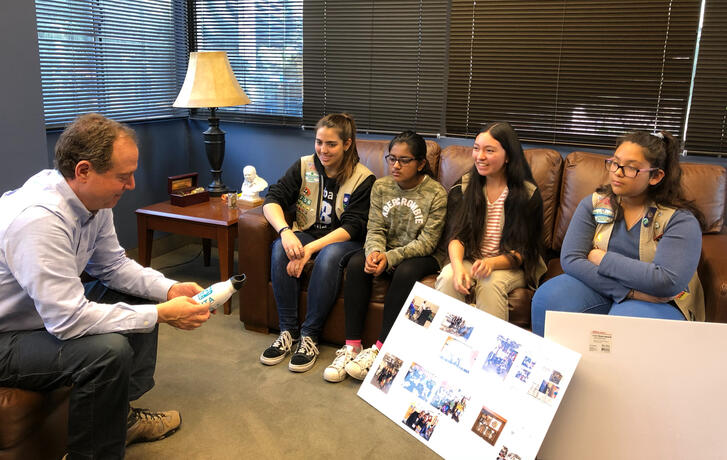
How Politics are involved
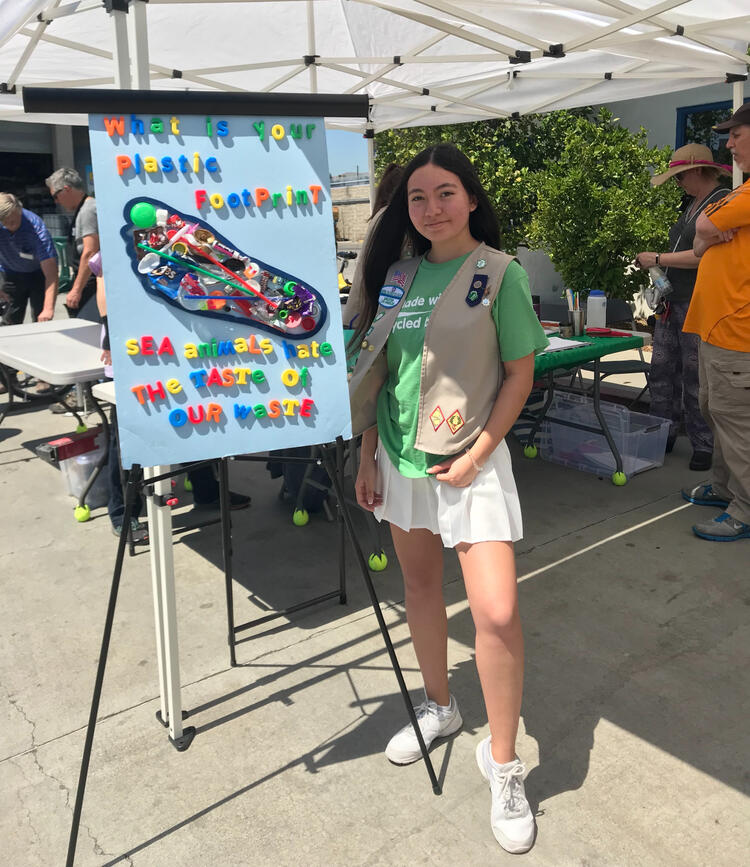
Ways to Get Involved in School
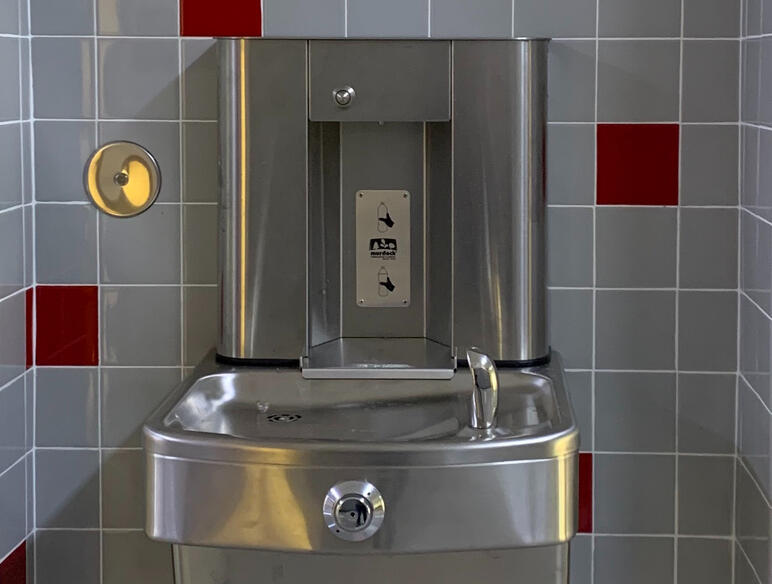
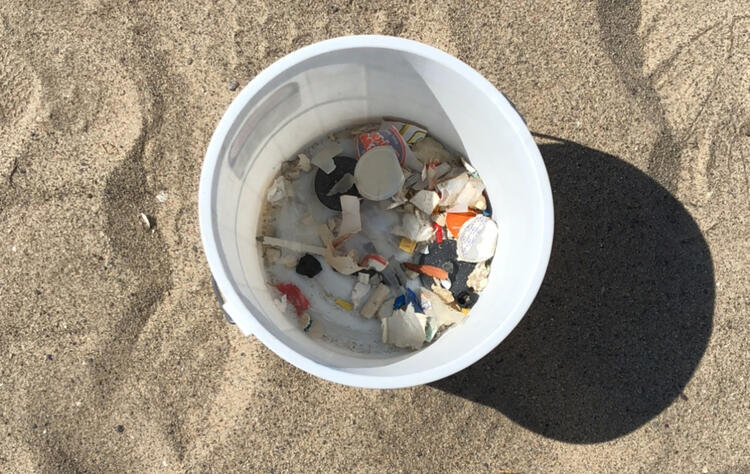
The Types of Plastic
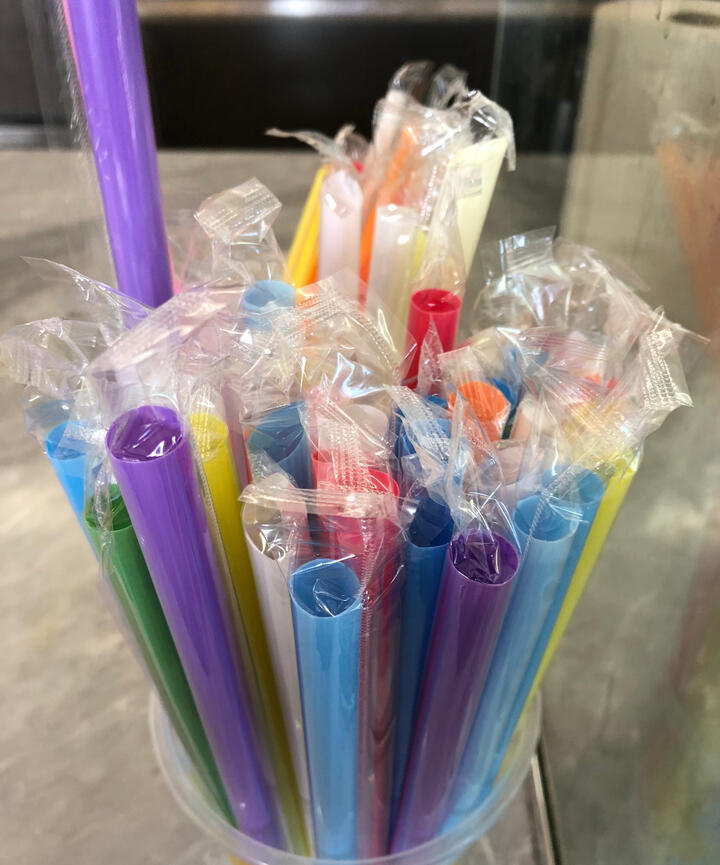
Why Generation Z is the Future
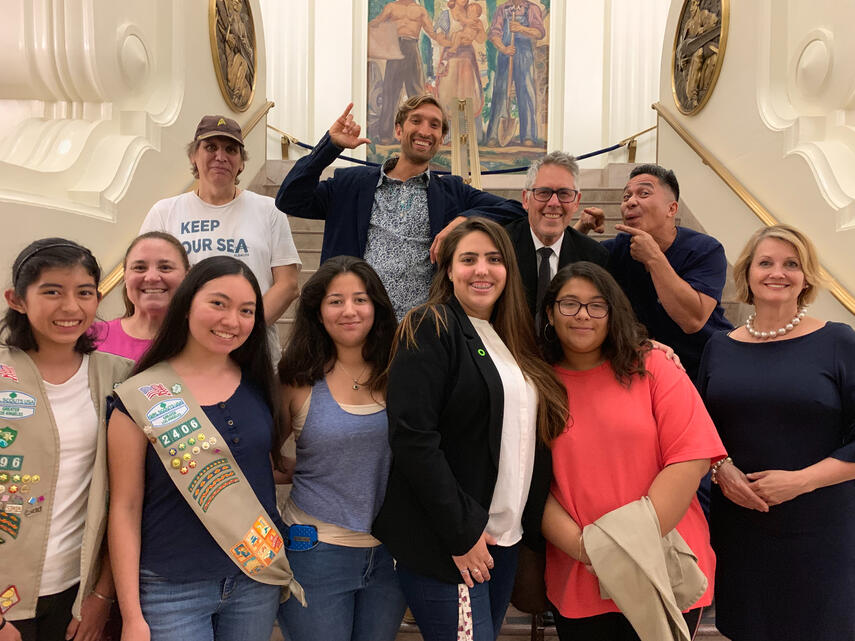
Student Activism
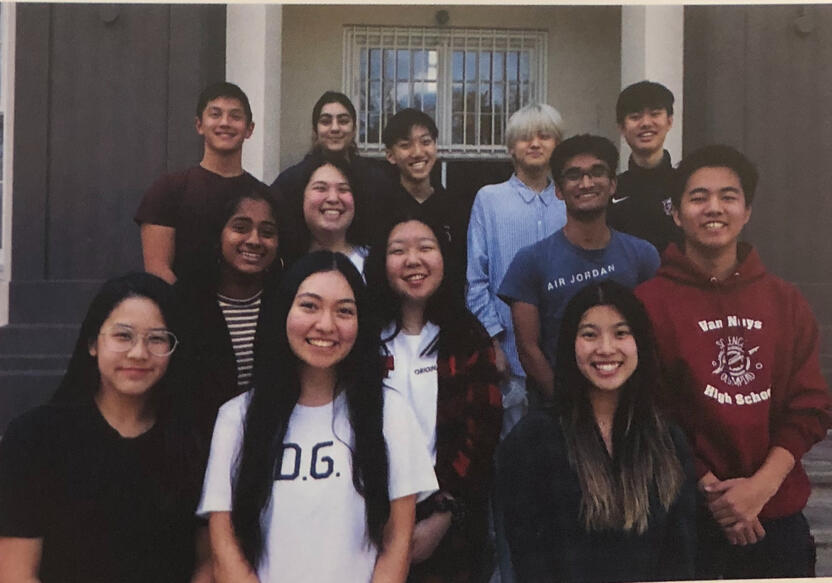
Water bottle filling stations
About me
Hello! My name is Kristen Vitolo and, when I started this website, I was a junior in high school. Now, I am a proud Class of 2020 high school graduate and currently a senior at UC Berkeley, where I am a Regents' and Chancellor's Scholar. I am passionate about environmental causes, sustainability, and zero waste! I first found my love for the environment in 2015 when I competed in a FIRST robotics tournament with my Girl Scout troop. The theme that year was "Trash Trek" and we chose to highlight plastic pollution in the ocean. I have spent my years since researching and studying plastic pollution and raising awareness within my local community. In working towards attaining the Girl Scout Gold Award, I created this website to document my journey and to share information with young people who want to make a difference. My Gold Award project also included installing a water bottle filling station at my high school along with promoting sustainability on campus through my club called ACT NOW! Environmental Club.
© Kristen Vitolo, 2020-2024. All rights reserved.
Plastic Pollution: Fast Facts
The Problem: When you throw away a plastic bottle and it ends up in the environment, it does not biodegrade. Instead, the sunlight and elements will eventually break it up into small plastic pieces that can end up in the waterways and, eventually, the oceans. Plastic pieces can be eaten by fish and sea animals and can kill them. When people eat fish contaminated with microplastics, the chemicals from the plastic enters into our bodies.Fast Fact: Each year, Americans use more than 7 billion pounds of plastic, but recycles less than 10% of the plastic that we throw away.Fast Fact: Plastic in the environment releases toxic chemicals, such as bisphenol A (BPA) and phthalates. BPA can impact human health as an endocrine disruptor and phthalates can be harmful to the kidneys, liver and reproductive system.Fast Fact: It is estimated by the year 2050, plastic pieces in the ocean will outnumber fish by weight. Watch The Story of Plastic to learn more about the "man-made crisis of plastic pollution and the worldwide effect it has on the health of our planet in the people who inhabit it." Also, students are able to watch this film for free if they are members of Wayfinder Society, through the Wayfinder website (more about this on the "Generation Z" page).Fast Fact: To learn 10 shocking facts about plastic from National Geographic, click on the link below.
Types of Plastics
You may have heard of the seven types of plastics before, but you might not know what the difference is! The infographic below explains the differences between the seven types of plastics and gives a couple of examples for each. If you would like to learn more about the harms and recyclability of each plastic type, refer to the websites linked at the bottom of this page.
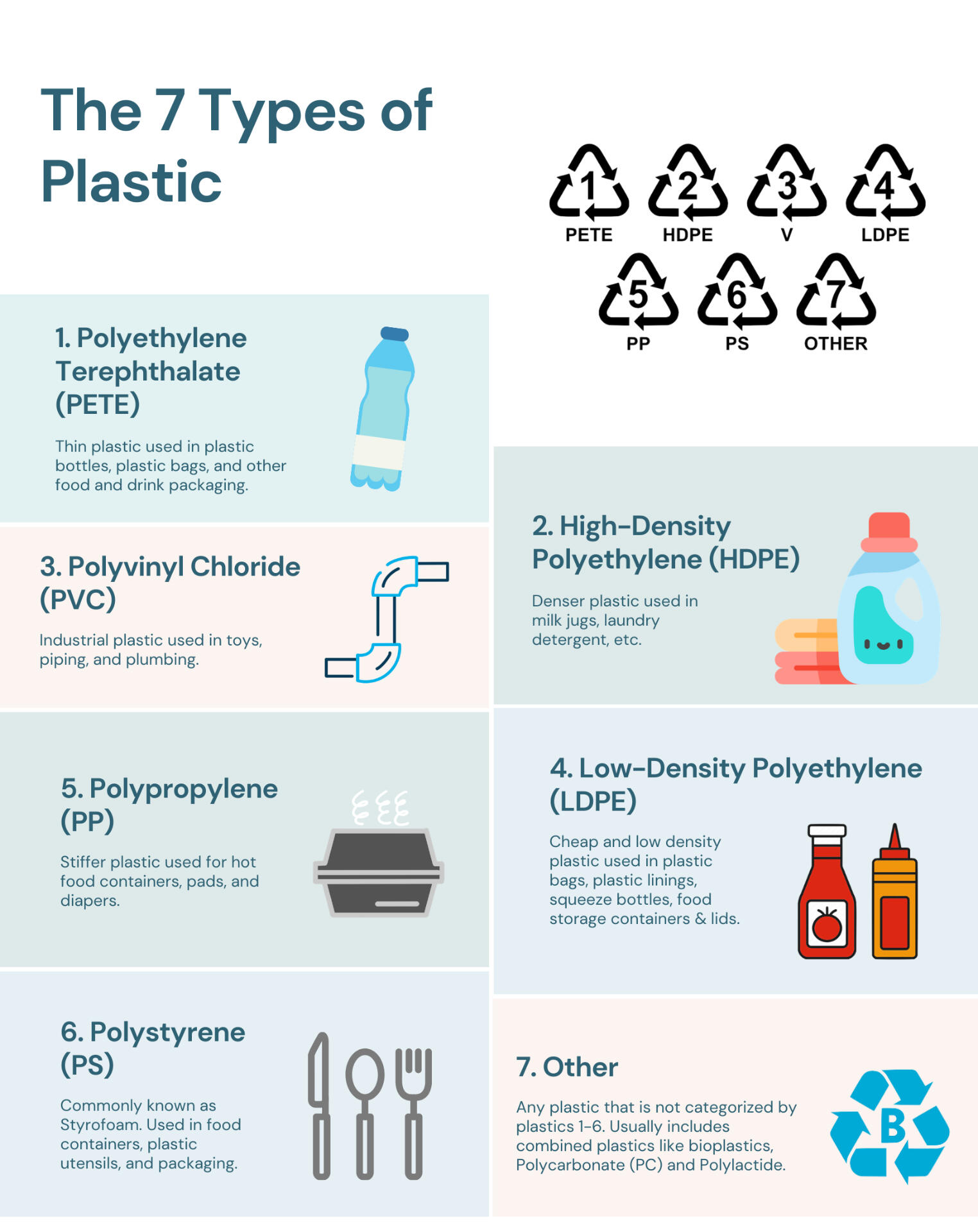
For more information, click on the following links:
What Plastics are Banned & What Should be Banned
In the United States, many different plastics have been banned or are in the process of being banned. This includes everyday items like plastic bags, straws, and carry-out containers. Although many states have began to participate in banning some of these items, several still refuse. This page will go over some of the bans currently in effect, the bans that are still in progress, and the bans that should be bans.
plastic bans as of 2020
1. The plastic bag ban
Currently, only 8 states have banned single-use plastic bags. These states include California, Connecticut, Delaware, Hawaii, Maine, New York, Oregon and Vermont. Although the ban is slightly different in every state, most states require the customer pay if they ask for a plastic bag. The bag fee encourages people to bring their own reusable bag instead of purchasing plastic bags provided by the store.
2. The plastic straw ban
This ban is not as widespread as the plastic bag ban, however, it one of the more well-known bans and receives greater publicity in the news. This ban requires sit-down restaurants to hand out plastic straws only upon request. Currently, the only statewide straw bans in effect are in California and Oregon. However, other cities, such as Seattle, have also passed this ban. Food services, such as Starbucks, are beginning to phase out plastic straws as well.
3. Polystyrene ban
The polystyrene ban is actually a ban on an entire plastic category, plastic #6. Plastic #6 can be polystyrene (PS) or expanded polystyrene (EPS). An example of PS is a red Solo cup, a food clamshell container, or utensils (these are known as rigid polystyrene). Expanded polystyrene (EPS) would be what people refer to as Styrofoam. Some municipality bans focus on EPS, while others focus on PS all together (both PS and EPS). This type of ban includes popular take-out food containers, cups, utensils, and other items used in restaurants and grocery stores. Maine is the first and only state to pass this ban, however, many cities, including Berkeley and New York City, have also passed this ban.
Why Generation Z is the Future
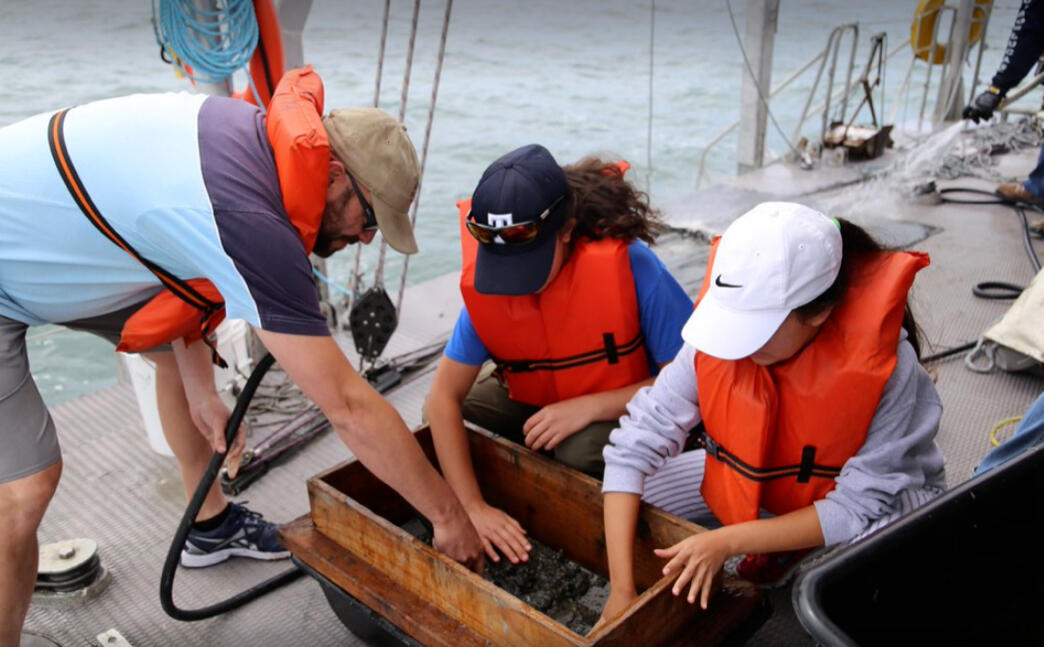
"The power of connected and informed young people is difficult to ignore." Prince Harry, The Duke of Sussex, January 30, 2019.Back in February 2018, I participated in Algalita Marine Research and Education's Plastic Ocean Pollution International Youth Summit. There, I spent three days in Dana Point, California with young people who shared the same values that I have regarding the plastic pollution crisis in the ocean. We learned from experts in environmental issues and from each other when we shared our projects. Youth are the most valuable advocate for the future health of our planet. To learn more about Algalita, visit their website at www.Algalita.org.Start a journey on Algalita Marine Research and Education's new program, the Wayfinder Society, to participate in activities that work towards making the world free of plastic pollution. Find out how you can advance through the four levels of difficulty and earn Waymarks along the way. You might even be able to apply for a "Stay Stoked" award to help fund your college education. Click on the button below titled "Algalita Wayfinder".We are the generation that carries a Hydroflask water bottle wherever we go. Young people today care about zero waste. You can encourage others to carry their own reusable cutlery (I use a bamboo set), metal straws, silicone snack bags, and reusable shopping bags.
Below are photos from Algalita's events that I participated in from 2015 to 2019.
For more information on Algalita's Wayfinder Society:
How Politics are involved
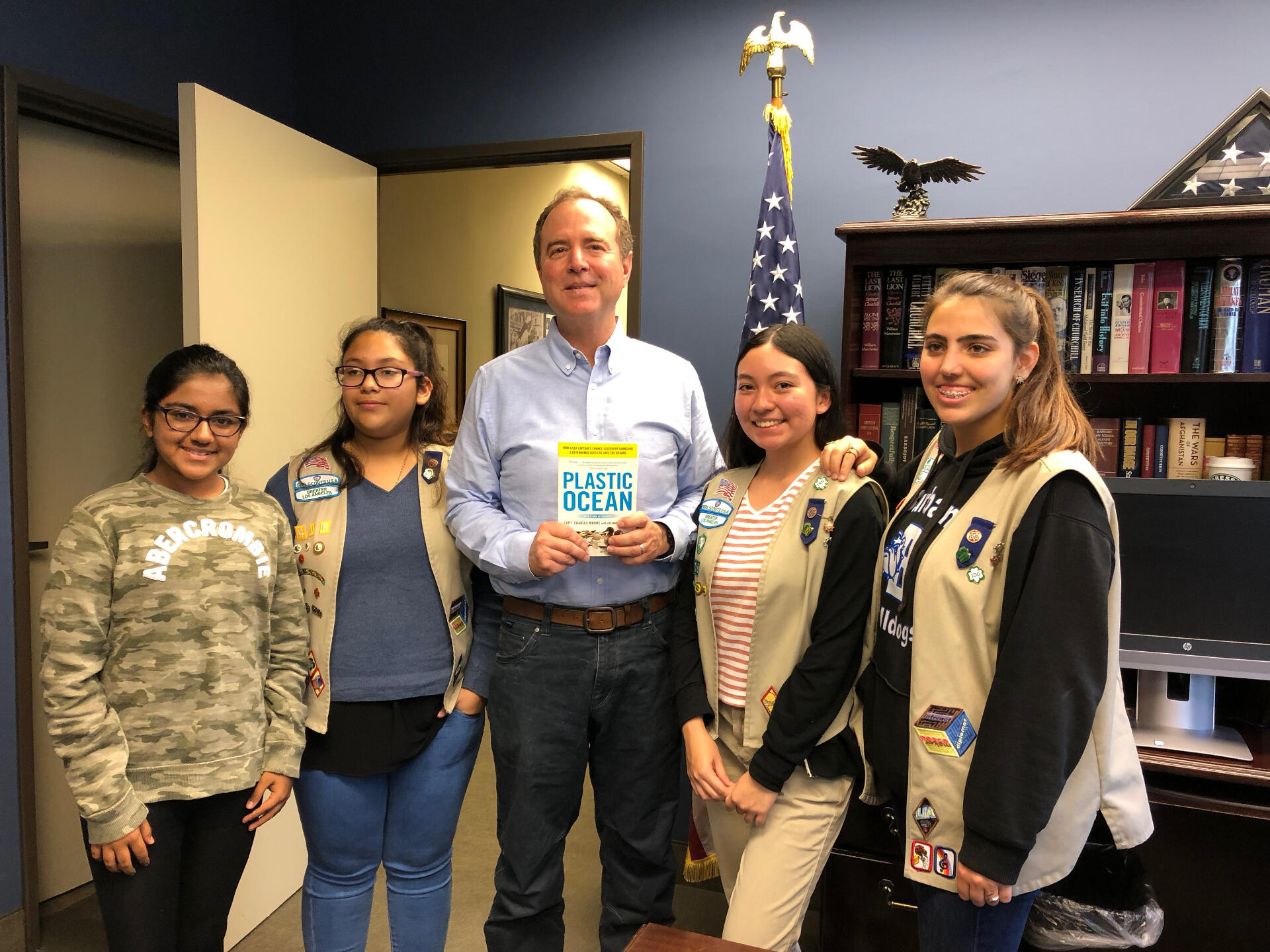
To learn more about the health risks that plastic pollution poses, click the button title "Risks" to read a blog by Sarah King of Greenpeace.In the California state legislature, Senate Bill 54 and Assembly Bill 1080 were introduced in 2019 to reduce single-use plastic pollution and the negative impact to our marine biosphere. In 2020, Senate Bill 54 did not receive enough votes to pass before the legislative season ended on August 31, 2020. It needed 41 votes in favor, but garnered only 37 votes. Two dozen lawmakers declined to cast their vote on this proposal. Two years later, SB 54 supporters were able to get this bill to Governor Newsom to sign into law on June 30, 2022, the same day the Senate voted 29-0 to pass the measure and a day after it passed nearly unanimously in the State Assembly. For more information on SB 54 when it was introduced in 2019, click on the "Plastics Bill" button below.A Plastics Free California initiative is being proposed for the November 2022 ballot. As of September 1, 2020, the initiative has received more than the 623,212 voters signatures needed to be included on the ballot. The goal is to reduce single-use plastics by 25% by 2030 and to eliminate the use of non-recyclable polystyrene containers (Styrofoam). Click on the "CA Initiative" button to read about it.
For more information, click on the following links:
Student Activism
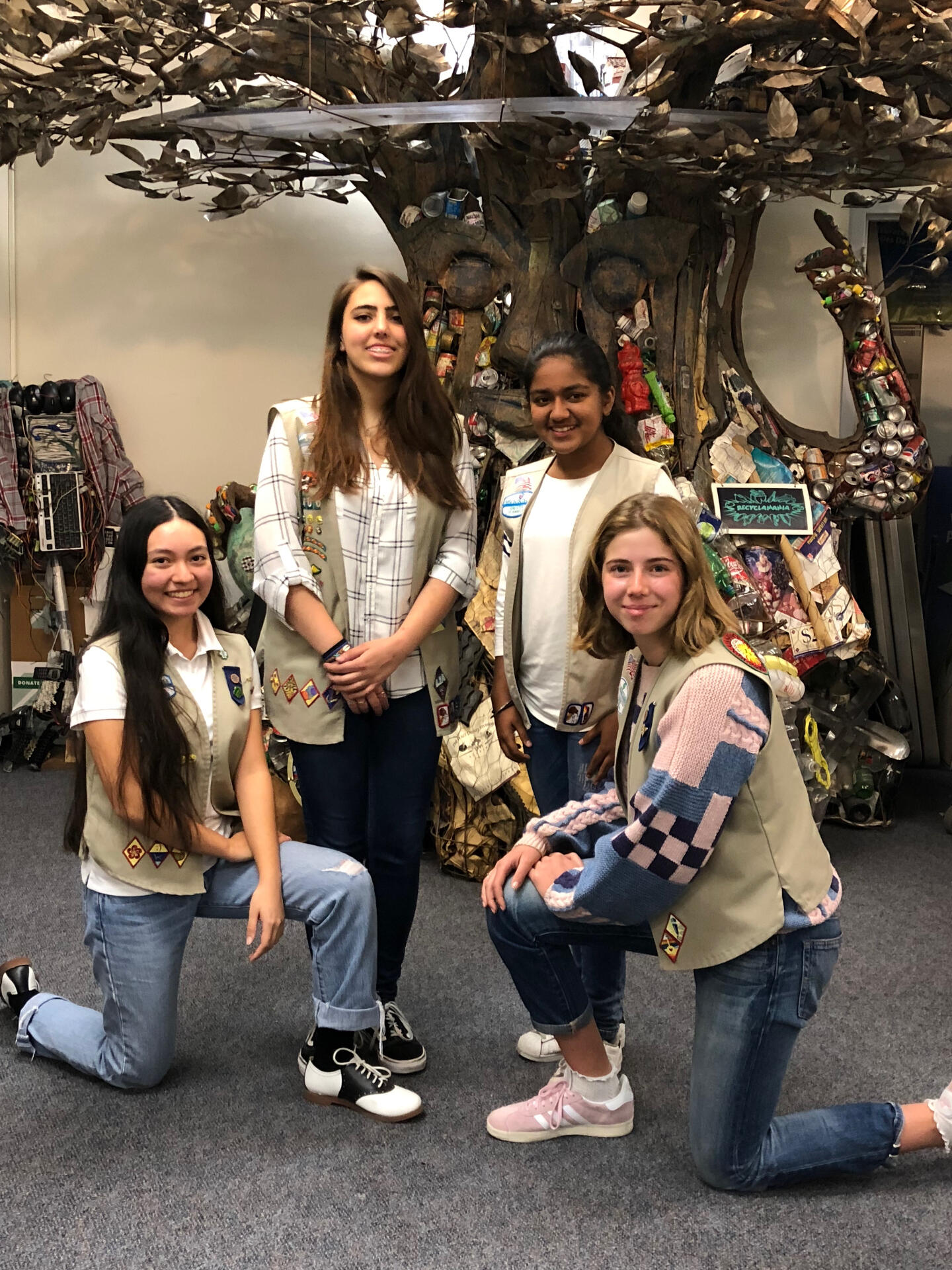
Take a pledge to reduce plastic waste. Click on the link titled "Pledge" below to take a pledge on National Geographic's website.Partner with 5 Gyres on their TrashBlitz project to gather data in your own community to help inform solutions to the plastic pollution problem. Click on the "TrashBlitz" link below for more info.Get involved with Coastal Cleanup Month through Heal the Bay in September each year. Also, organize a group of friends to participate in their monthly beach cleanups. Click on the "Heal the Bay" link below to learn more.Start a Surfrider club at your school. The Surfrider Foundation is looking for students who are passionate about the ocean and interested in starting a club at their local school that can be part of the student club network. As mentioned on their website, young people can take part in "influencing environmental action through service, leadership development, civic engagement and direct action organizing." Click on the "Surfrider" link below for more info.Raise awareness about the dangers of plastic pollution by lobbying your elected officials and by speaking up at city council meetings. Click on the "Civic Engagement" link to read about my Girl Scout troop's efforts in the city of Burbank, California.
For more information, click on the following links:
Ways to Get Involved in School
1. Start an environmental club at your school and recruit students to join.2. Learn about the life cycle of a plastic bottle and teach your classmates. Click on the "Plastic Bottles" button below.3. Promote a Zero Waste Week at your school. Click on the "Zero Waste Week" button below for more information.4. Create a fun PSA video to upload to YouTube. See our example in the "Straws PSA" button below.5. Petition your school or school district to install water bottle filling stations. This will help minimize the use of disposable water bottles and also provide filtered drinking water.6. Write letters to local restaurants and business owners to ask them to reduce their usage of disposal plastic items.7. Start a fashion forward campaign on campus that can include fun events like a gently-used clothing exchange. Teach students about avoiding clothing made from fleece which releases microplastics when washed. To learn more about fleece, click on the link "Fleece."
Water Bottle Filling Stations
At my high school, I started an initiative to have water bottle filling stations installed on campus. My high school was built over 100 years ago and many of the drinking fountains are old. Students complain about the bad taste of the water from the fountains. As a result, some students bring reusable water bottles to school, but many bring plastic water bottles.The steps I took to advocate for water filling stations (also called hydration stations) on campus is as follows:Step 1: After first researching costs and types, I approached the school principal with my idea to install water bottle filling stations at school. She was in favor of it and directed me to contact the school district.Step 2: I proposed this idea to the chief facilities executive at the Los Angeles Unified School District (LAUSD).Step 3: Three facilities executives from LAUSD came to our school to meet with the principal and me in the school office's conference room. We chose type of water filling station we would like for our school and walked the campus to identify locations for three stations.Step 4: For several months, I had follow up conversations, emails, and meetings to continue advocating for the installation of the water filling stations. After first agreeing to install three filling stations, the facilities division eventually changed the plans from three to one filling station to be installed during the 2019-2020 school year. The last two stations would be installed the following year.Step 5: Due to the unforeseen global health pandemic due to COVID-19, our school closed to in-person learning on March 13, 2020. The local and state government imposed a stay-at-home order for everyone, and this continued through the end of the school year.Step 6: In July 2020, when restrictions began to ease a little, LAUSD facilities started work on the water filling station project in the hallway of the main building. I donated funds I had raised to pay for a portion of the costs.Step 7: By August 2020, the demolition work of the old drinking fountain was done and the new water filling station was awaiting to be installed. The exact timing of the installation was uncertain though since the campus remained closed to in-person classes.Step 8: In October 2020, the facilities division installed the new water filling station and it is ready to use! However, as of November 2020, students are still learning remotely at home. When a hybrid schedule commences possibly in early 2021, students on campus will be able to bring their reusable water bottles to school to fill in the hallway of the main building!
Here is the before and after of the water bottle refill station.
Location: Main Building Hallway
